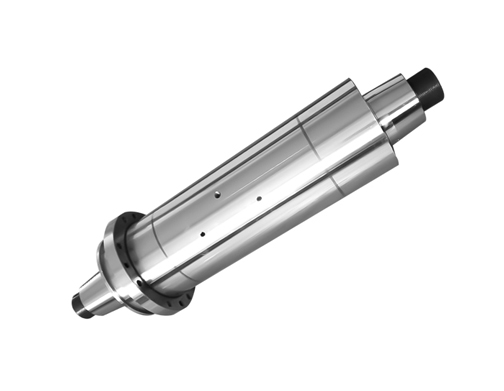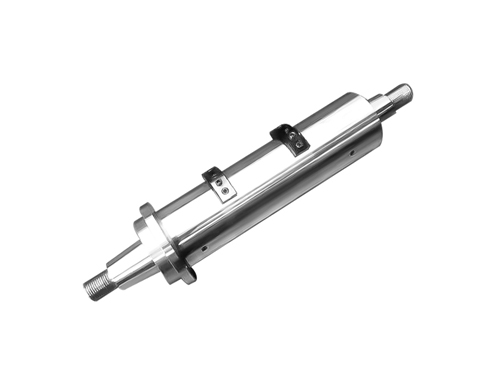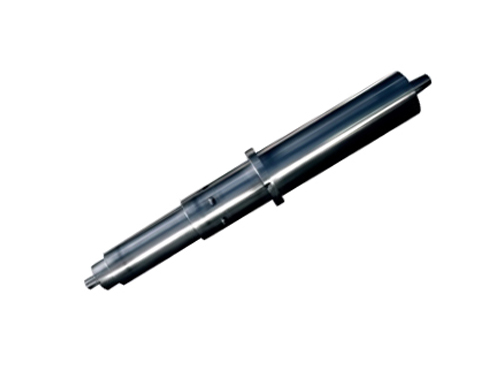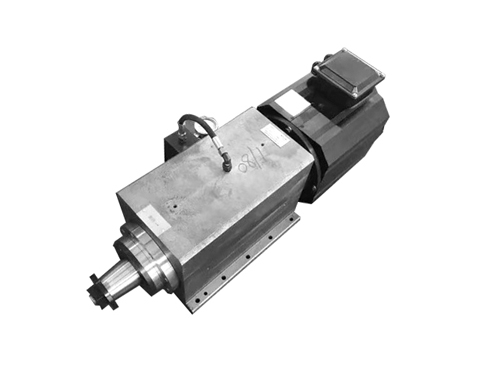The working principle of the dynamic and static pressure spindle is mainly to form a thin film between the spindle and the bearing through hydraulic pressure and pneumatic pressure, which keeps the spindle stable during high-speed rotation. The following is a detailed explanation of its working principle:
1、 Formation of oil film
Injecting oil: The dynamic and static pressure spindle forcefully injects lubricant (usually oil) into the small gap between the spindle and the bearing through a pressure pump.
Static pressure bearing: The injected oil forms a static pressure bearing oil film inside the bearing, which can support the weight of the spindle and reduce direct contact between the spindle and the bearing.
Dynamic pressure effect: When the spindle starts to rotate, a dynamic pressure effect is generated in the oil film due to the relative motion between the spindle and the bearing. This effect will further enhance the load-bearing capacity of the oil film, keeping the spindle stable during rotation.
2、 Refine the working principle
Pressure pump oil supply: The pressure pump continuously injects constant pressure oil into the bearing to ensure stable thickness and load-bearing capacity of the oil film.
Oil chamber and throttle: The dynamic and static spindle is designed with an oil chamber and throttle inside, which are used to regulate the flow rate and pressure of the oil. The structure and depth of the oil chamber will affect the distribution and load-bearing capacity of the oil film, while the throttle is used to precisely control the flow rate of the oil to maintain the stability of the oil film.
Main shaft floating: When the oil film forms and reaches a certain load-bearing capacity, the main shaft will be lifted by the oil film, forming a thin oil film gap between it and the bearing. In this way, the spindle will not come into direct contact with the bearings during rotation, thereby reducing friction and wear.
Rotational stability: Due to the support of the oil film and the effect of dynamic pressure, the spindle can maintain stability during high-speed rotation without shaking or vibration. This helps to improve machining accuracy and efficiency.
3、 Application Fields and Advantages
Application areas: Dynamic and static pressure spindles are widely used in the field of mechanical processing, especially in situations that require high-precision machining. Such as high-precision CNC grinding machines, internal and external cylindrical grinding machines, surface grinding machines, etc.
Advantages: The dynamic and static pressure spindle has the advantages of high precision, high rigidity, high load-bearing capacity, and good vibration absorption and seismic resistance. These advantages enable the dynamic and static pressure spindle to provide better machining quality and efficiency when processing high-precision components.
In summary, the working principle of the dynamic and static pressure spindle is to form a static pressure bearing oil film by injecting constant pressure oil, and to use the relative motion between the spindle and the bearing to generate dynamic pressure effect, thereby achieving support and rotational stability of the spindle. This type of spindle has broad application prospects and significant advantages in the field of mechanical processing.
 ch
ch English
English





